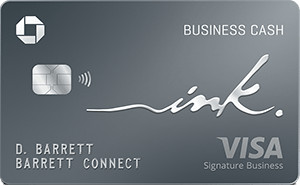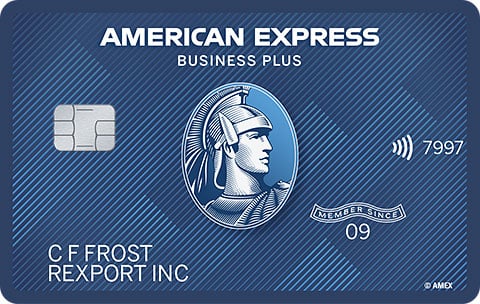Many or all of the products featured here are from our partners who compensate us. This influences which products we write about and where and how the product appears on a page. However, this does not influence our evaluations. Our opinions are our own. Here is a list of our partners and here's how we make money.
This time, you're the customer. You have a small business credit card and, like any savvy consumer, you're trying to squeeze the most value out of it.
Here are 101 ways to do that:
FEATURED
Pick the right business credit card
1. Make a list of your largest business expenses. Find a card that offers a higher rewards rate for the categories you spend most heavily on — such as office supplies, Internet or travel.
2. Compare sign-up bonuses, rewards and interest rates. Use NerdWallet's comparison tool and read our small-business card recommendations to find the best match.
3. Read about the protections each card offers. Small-business credit cards aren't covered by the Credit Card Act of 2009, but most issuers extend the consumer-friendly protections to them anyway.
4. Ask issuers whether your business credit card will affect your personal credit. For example, Chase doesn't report to consumer credit bureaus unless you default on your payments, for instance. Other issuers do, including Capital One.
5. Apply for a 0% introductory APR offer if you want to finance a major purchase. A no-interest offer can help you borrow money for free for major investments, such as new software or furniture.
6. Go with a rewards card if you’re not planning to carry a balance. Here's one card with an exceptionally high rewards rate.
7. Get a low-interest offer if you plan to carry a balance for a long time. A low ongoing APR could pay off more than a short 0% APR period.
8. Make a note of each card’s rewards redemption minimum. The smaller the amount, the easier it will be to use all your rewards.
9. Calculate the true value of your points and miles. Use this chart for reference.
10. Find a card with several 1:1 transfer partners, if you aren’t loyal to a certain airline or hotel chain. This card and this card are good candidates.
11. For more traveling flexibility, get a card that lets you redeem rewards for travel statement credits. This card offers that feature.
NerdWallet rating 5.0 /5 | NerdWallet rating 5.0 /5 | NerdWallet rating 4.6 /5 |
Annual fee $0 | Annual fee $150 | Annual fee $0 |
Regular APR 18.49%-24.49% Variable APR | ||
Intro APR 0% intro APR on Purchases for 12 months | Intro APR N/A | Intro APR 0% intro APR on purchases for 12 months from the date of account opening |
Recommended credit score | Recommended credit score | Recommended credit score |
12. Read your credit card terms and conditions. This will give you an idea of how you can earn rewards, when rewards will post and other information.
13. Find out when your 0% introductory APR period ends and note it on your calendar. Your issuer isn't required to alert you beforehand when your APR will go up in this case, and most don't.
14. Check your mail. If your terms change, your issuer might notify you via snail mail.
15. Set a rewards saving goal. If you're collecting points or miles for a big trip, avoid spending them on small purchases.
16. Get an app to help you track your awards. AwardWallet, for instance, will list the points and miles you've accrued and notify you when they're about to expire.
17. Make employees authorized users. Imagine you're on vacation when your store's cash register runs out of paper. If someone other than you has a business credit card, he or she will be able to get more paper, and you won't have to bother with reimbursements.
18. Keep a record of your account information in a safe place, in case your card is lost or stolen. If you choose to store the information on a computer, use a program that encrypts the data.
Maximize your rewards
19. Register to earn rewards with your card issuer's partners. Southwest Airlines, for instance, lets you earn Rapid Rewards points with several travel partners.
20. Pay with credit whenever possible. Ask your vendors whether you can link your credit card to your account. This will help you earn the most rewards.
21. Identify one or two high-value redemption options your credit card offers. Read NerdWallet's rewards program reviews to find out which redemption options to avoid.
22. Find out when your rewards expire and note it on your calendar. Even low-value redemptions are better than forgetting about your rewards altogether.
23. Earn extra rewards by shopping on your issuer’s bonus malls. Here are a few popular ones.
24. Use "card pairings" to earn more rewards. Cards that earn bonus rewards in different categories amplify your earnings.
25. Encourage employees to use the business credit card for business-related purchases, instead of using their own cards and requesting a reimbursement. You'll save time on accounting, show your employees you trust them and earn more rewards.
26. Follow issuers' social feeds to get alerted about limited time offers. Some issuers offer bigger sign-up bonuses at certain times of the year, and if you follow them on Twitter or Facebook, you might be the first to know.
27. Talk with your accountant about your profit and loss statements. Look for patterns, and find out whether it makes sense to adjust your credit card budget.
28. Request expense reports when your employees spend with business credit cards. This may reduce the chances of spending abuse.
29. Borrow only what you need. Don't spend just to earn points or miles.
30. Use your credit card statements as a reference for tax deductions. If your mileage logs, or the records you keep of business-related travel, are incomplete, these statements can help you fill in information for missing trips. You can look up store addresses online and calculate the distance you drove.
31. Link your credit card to your accounting software. Syncing your credit card to an application like QuickBooks can automate most of your bookkeeping.
32. Save receipts after making big purchases, so you can take advantage of price protection. With this feature, if the price on an item purchased with your card goes down, your payment network may reimburse you for the difference. Here's how it works.
33. Create a business plan before using your business credit card for financing. Financing a business with credit cards can be risky, but if you can't get a small business loan, it could be the best alternative.
34. Write down three milestones you'd like to see your business achieve in the next 10 years. Use your credit card to help you move toward those long-term goals, whether it's improving your business credit to qualify for a business loan or increasing revenue so you can open a second location.
35. Pay on time. Avoid late fees and spare your credit.
36. Ask for confirmations when canceling subscriptions. If you switch payment processors, for example, and your old processor continues to charge your credit card, a letter confirming the cancellation will make it easier to dispute and remove the charges.
37. Budget for interest (if you plan on paying it). It can add up more quickly than you might think.
38. Purchase rewards if your card issuer is selling them at a deep discount. If they're going for 1 cent each and they're worth 2 cents each, for example, it could be worth the splurge.
39. Make big purchases with your credit card on the day after your issuer's closing date to maximize cash flow. If your statement closes on the 25th, and you make a big purchase on the 26th, you'll have another full month before your statement closes. With the grace period, that adds up to about 55 days without interest.
40. Deduct interest and annual fees on your taxes as business expenses. You'll save more during tax season.
41. Use your business credit card to earn elite status more quickly. Some co-branded cards come with automatic elite status, a type of membership level that can help you get free upgrades and other perks. Others come with a faster way to achieve elite status. With strategic spending, you'll be able to get all the perks that come with this status.
42. Use a credit card that doesn't charge foreign transaction fees. Here are some cards that don't charge you 1% to 3% more for each transaction abroad.
43. Register for your card's CLEAR, TSA Pre-Check or Global Entry feature, if it's available. Here are some cards that offer these features.
44. Call your card's concierge service to get help setting up an itinerary. Visa Signature and World MasterCard cards come with concierge services.
45. Refuse your rental car's insurance if you want to use your credit card's primary or secondary rental car insurance. Here's what you should keep in mind.
46. If you need to purchase airline tickets on short notice, use rewards you've accrued with your business credit card (if rewards pricing is based on distance). Some carriers, such as American Airlines and Alaska Airlines, price rewards tickets by distance, not by cash price. Although the dollar price of a ticket may be higher when you've got to book last minute as opposed to planning ahead, the rewards price, in this case, may stay the same.
47. If you're low on rewards, find out if you can pay partially with cash and partially with points. Several cards offer flexible high-value redemption options that can help you stretch your rewards further.
48. Link your credit card to a dining rewards program. Apps like OpenTable make it simple to pay with your credit card and earn additional dining rewards on top of the points or miles you get with your card.
49. Compare cost of two one-way rewards flights to a round-trip rewards flight when redeeming points or miles. Sometimes, two one-way flights can be less expensive than a round trip.
50. If you're enrolled in a loyalty program, find out which alliance partners you can earn rewards with. There are three major airline alliances — SkyTeam, Oneworld and Star Alliance. If you have a co-branded credit card or loyalty account with one of the airlines in these alliances, you may be able to earn loyalty points or miles by providing your membership number when flying with alliance partners.
51. Ask for upgrades. If your card offers complimentary upgrades at, say, a hotel, remember to request them at the counter.
52. Continue shopping after you buy your airline tickets. If you're purchasing non-refundable tickets with your credit card, you may still have a 24-hour period to cancel the tickets and get your money back. Check for lower prices during this time.
53. Visit an airport lounge. If your credit card gives you airport lounge access, make the most of the free snacks, complimentary drinks and comfy chairs on your business trips.
54. If your credit card offers a complimentary in-air Wi-Fi plan, register for it before your next trip. You'll be able to get more work done in-flight without paying the usual rates.
Protect yourself
55. Use your business credit card only for business expenses. If your business is a limited liability company or a corporation and you're mixing personal and business expenses, it's called "piercing the corporate veil." In the event someone sues your company, the plaintiff may try to go after your assets as well as your business's.
56. Provide written guidelines on what employees can and can't charge to the business credit card. Some companies require employees to sign contracts agreeing to certain rules.
57. Monitor employee spending. American Express and Chase cards allow you to set limits for each authorized user, which could make it easier to keep an eye on employee charges.
58. Pay off your business's debt, even if your business fails. Remember that your business credit card probably has a personal guarantee, which means you may not be able to discharge your credit card debt, even if your company files for bankruptcy. Try to pay off your highest-interest business credit card debt first with company funds to reduce your chances of personal bankruptcy and creditors pursuing your personal assets.
59. Set up auto-pay. If you set up auto-pay for your minimum payment, you can ensure you pay at least the minimum each billing cycle. If you set it up for paying in full, it will generally pay everything up to your closing date, maximizing your grace periods for your other purchases.
60. Create calendar reminders that prod you to check your credit card accounts at least once a week. Log on to your online portals and track your balances.
61. Set up text and email alerts. These can let you know when your credit card has been charged, when an auto-payment is about to take place or when terms have changed.
62. Switch to paperless statements and save a tree. You'll also reduce the risk of someone stealing your credit card information by tampering with your mail.
63. Make a calendar reminder for when your subscriptions are due to automatically renew. If your subscription for, say, Amazon Prime, is going to automatically renew and charge your card, mark the date on your calendar. This way, you can cancel it beforehand if you decide you won't need it for the next year.
64. Set alerts for when your credit cards were originally issued. Decide whether to cancel your card before the annual fee kicks in.
65. Download your business credit card’s app so you can make payments from your phone. Make sure your business credit card is linked to your business checking account.
66. Link your card to a digital wallet. Programs like Apple Pay, for instance, use EMV technology and tokenization for more secure payments when used on EMV- and NFC-capable terminals. Come October, when EMV technology becomes the norm and more stores update payment terminals, you'll be able to pay with your smartphone at more locations.
Build your business credit
67. Make sure all your business's accounts are under your company's legal name. If you've registered the name "Rachel's Flower Shop, LLC" in your state, for instance, use that name for every account you open. This consistency makes it easier for creditors to verify your business and begin tracking your business credit.
68. Read your monthly credit statements. Make sure the information is correct.
69. Pull your personal and business credit reports. Pulling personal credit is free, but business credit can cost you.
70. Identify areas for improvement. Here are a few things your credit card statements might say about you (and your business).
71. If you have credit card debt, make a plan to pay off your balances by a certain date. You could save money on interest and reduce your chances of falling deeper into debt, while improving your credit.
72. Ask for a credit line increase if your revenue increases. This generally counts as a hard inquiry, but it can also boost your credit scores by lowering your credit utilization ratio. For personal credit scores and most business credit scores, it's best to keep your credit usage low.
73. Make multiple payments per month to limit your use of available credit. Some cards limit how many payments you can make per billing cycle. Find out your issuer's policy if you plan to make several payments per cycle.
74. Monitor your personal credit. Lenders almost always look at your personal credit when extending small-business loans. Make sure you're taking care of it.
75. If you miss a payment, make it as soon as possible and call your issuer. If you're a loyal customer and made a one-time mistake, your issuer may waive your late fee.
76. Use a good balance transfer offer to get out of major credit card debt. But don’t get stuck in the balance transfer cycle — pay off your debt as quickly as possible.
77. Find a foolproof way to keep your credit cards organized. If apps and text alerts don't work, consider using fewer cards.
78. Make a list of reasons why you went over your credit limit or maxed out your credit card. Come up with a plan to avoid it in the future.
79. Switch to a no-fee card if you didn’t earn enough rewards to make your annual fee worthwhile. Call your issuer and find out whether you can transfer your account without triggering a hard inquiry.
80. Lower your credit card spending. If you're using too much of your available credit and your credit score is taking a hit, trimming your budget could help.
81. Apply for credit when you can, even if you may not need it right away. If your business takes a hit, your pre-existing credit lines could help it recover.
82. Talk to other entrepreneurs about credit cards. You may find some new, creative ways to use your rewards or increase your earnings.
Know when to change credit cards
83. Put your business needs before product loyalty. Why use a credit card that's no longer helping you? Leave it open — and use other accounts.
84. Negotiate for better terms if you’re unhappy with your current ones. Issuers are often willing to work with you.
85. Evaluate your past credit card statements to find out how much you spend in each category. If the categories you spend in most frequently aren’t the same ones you get bonus rewards for, consider switching cards.
86. Continue looking for good deals — even after you get a credit card. New cards come out all the time, and issuers are always bidding for customers by offering bigger sign-up bonuses. If you keep your eye out, you might find a card that better suits your business.
87. Call your issuer if your card is no longer useful but you don’t want to close it. You may be able to transfer your account to a different card and keep your account history.
88. Transfer linked accounts before closing a card. You'll avoid many returned payment fees.
89. Get a card with a higher rewards rate if your credit has improved. Those with excellent personal and business credit will have a better chance of qualifying for the best deals.
90. Hold on to the card you already have if your credit falls. If you apply for a new card, you'll likely get worse terms.
Protect your identity and payment information
91. Keep your personal information up to date. You don't want your sensitive mail going to the wrong address.
92. Use a secure mobile payment system, such as PayPal, to pay small private vendors. Avoid sending your credit card information via email or text.
93. Do online shopping on secured sites. You can tell if a website is secure if it starts with the letters https:// rather than http://; the “s” stands for secure.
94. Get a secured mailbox (if you don’t already have one). If your mailbox has a lock on it, it's less likely that people will steal mail that contains payment information from you.
95. Dispute incorrect information on your credit report that’s hurting your business or personal scores. You can generally dispute items on business credit reports by submitting a complaint to the credit bureau that recorded the error.
96. Close obsolete authorized user accounts. If no one should be using them, it's generally not a good idea to keep them open.
97. Cut up your old credit cards. Fraudsters won't be able to use the card to set up a new account.
98. Report travel plans to your issuer. If your issuer knows about your itinerary, you won't risk getting your card frozen midtrip because of a fraud alert.
99. Shred old credit card statements. Once you've read your statements and kept them as long as you needed to, destroy them to protect your credit card information.
100. Before switching to a new vendor, look it up on the Better Business Bureau website and other review sites before providing your credit card information. If you find several complaints, consider taking your business elsewhere.
101. Check up on cards you don’t use frequently. If you're not using a card but want to keep it open, log on regularly to make sure fraudulent purchases don't escape your notice. Don't end up with a surprise collections account.
Make your business credit card work for you
To help your business, you don't need to pick up all 101 of these habits right away — even incorporating one or two new credit cards tricks could boost your business's savings. And once you start benefiting from the rewards, you can use the perks to serve both your employees and your customers.

| Product | Annual fee | Rewards rate | Intro offer | Learn more |
|---|---|---|---|---|
 Ink Business Cash® Credit Card NerdWallet Rating Apply now on Chase's website | $0 | 1%-5% Cashback | $350 | Apply now on Chase's website |
 Ink Business Unlimited® Credit Card NerdWallet Rating Apply now on Chase's website | $0 | 1.5% Cashback | $750 | Apply now on Chase's website |
 Capital One Spark Cash Plus NerdWallet Rating Apply now on Capital One's website | $150 | 2%-5% Cashback | $1,200 | Apply now on Capital One's website |
Find the right credit card for you.
Whether you want to pay less interest or earn more rewards, the right card's out there. Just answer a few questions and we'll narrow the search for you.










